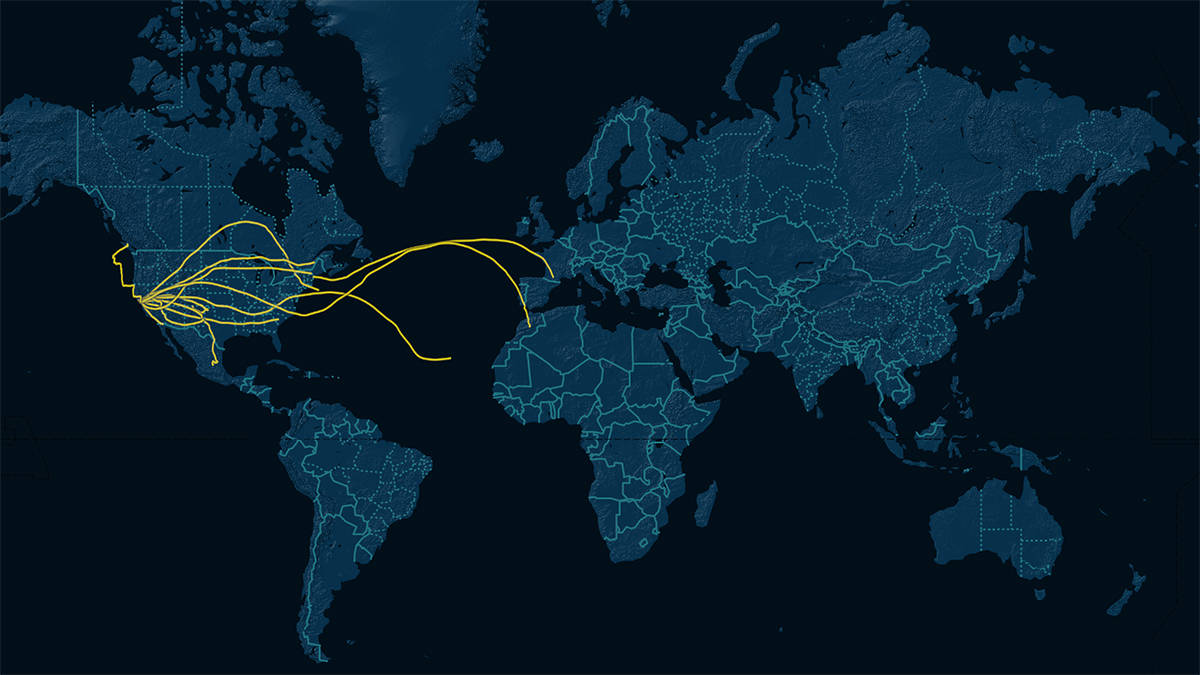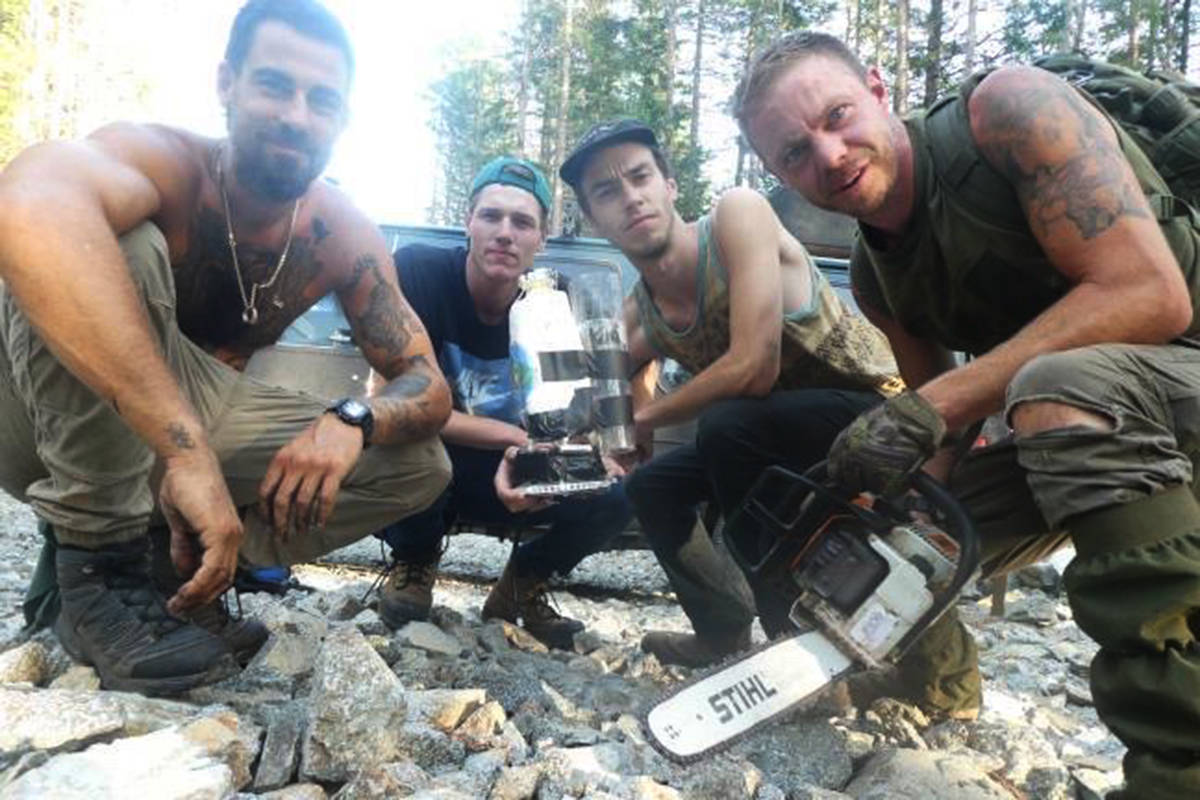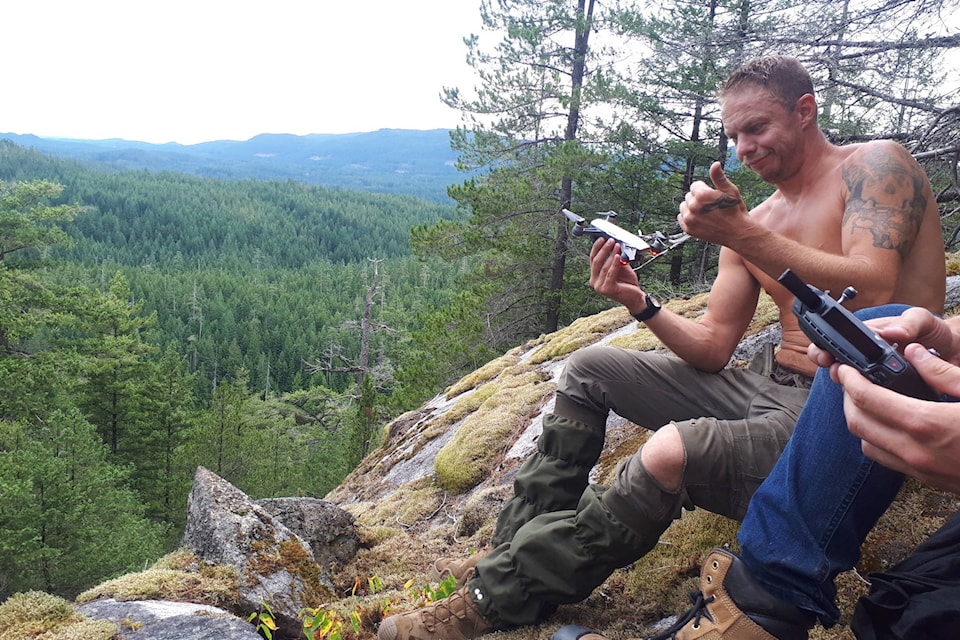When the call came in, the people at Quadra Island Kayaks didn’t quite know what to think. It was an odd request to be sure.
A climate company from California had flown a balloon up the Pacific Coast and it had landed – according to their data – at the northern tip of Quadra Island.
Quadra Island Kayaks assembled a team of four, including owner Chris Arends and kayak guide Christian Gianfagna and set out with a couple sets of GPS coordinates to find the balloon.
They drove about 20 minutes and then hiked into the dense forest for a few hours.
“It was the middle of nowhere,” said Gianfagna.
They couldn’t find anything and returned to the van in the dark.
The request to find the balloon had come from Gilroy, Calif., about a two-hour drive south of San Francisco. The startup, WindBorne Systems had been testing to see how different the wind forecast from the American National Weather Service was from reality.
The company, founded by a group of Stanford graduates, is aiming to improve the quality of weather data gathered in places no one goes, like over oceans and deserts.
“We’re fundamentally a climate company,” said CEO Paige Brown. “We’re trying to help humanity adapt to climate change by getting weather data in places were people usually can’t access it.”
WindBorne Systems’ balloons are about nine feet tall and are attached to a unit the size of a milk jug that gathers all the data.
The team on Quadra Island sets out again a few days later. They’re better equipped this time with a drone, a saw, and some climbing equipment. They park the van – a lookalike to Mr. T’s GMC, earning them the nickname “The A Team” – and head into the heavy bush again. They follow a set of GPS coordinates rather than a set trail and make their way through the woods past fresh cougar tracks, through mud and swamps, gaining and losing elevation. They get chased by a swarm of wasps.
While the group of four enjoys spending time hiking and paddling outdoors, they have never explored this part of Quadra Island and aren’t familiar with the terrain.
“It was pretty fun,” said Gianfagna, “but it was also pretty dangerous.”
This year, WindBorne has sent about 35 balloons into the air to collect wind speed and direction data. In this prototype phase, they’re trying to get all the balloons back to analyze what Chief Product Officer Kai Marshland calls “high resolution data.”
Their balloons have travelled all over the U.S. and Mexico and have even made it across the Atlantic Ocean to Morocco.
Brown said they’ll try to find the balloons themselves or ask family and friends to help. Brown’s dad and grandfather have found balloons before and so has Marshland’s grandfather. Next, they’ll reach out to someone local.
Quadra Island is the fourth time a balloon has touched down in Canada. They’ve also had them land in Quebec, Saskatchewan and Alberta.
In their Pacific Coast experiment, the team discovers that the National Weather Service prediction is off by about 30 per cent.
“This was a big indication that the wind data out over the ocean isn’t very good and there’s a lot of room for us to improve the way weather is predicted,” said Marshland.
Windborne Systems is able to fly the balloons kind of like a sailboat, rising and falling to catch different wind currents.
“As it flies, we can continue to make better predictions because our balloon is collecting that wind data that let’s us figure out where it’s going to go next,” said Marshland.
With a few dozen flights under their belt, the team at WindBorne is looking at scaling up. While there are other weather companies out there, Brown said no one is taking the same approach as them – flying low-cost small latex balloons. Soon they hope to add temperature and humidity data to their collecting. Then they will have all the ingredients for a full-blown weather forecast.
Once the data from a payload is analyzed, they can essentially hit a reset button, swap out the batteries and send it up again to collect more data on another flight.
They didn’t want the balloon to continue north and end up as pollution in the ocean or the mountains, so they brought it down in a remote corner of Quadra Island.
It’s later in the day and the A Team has all but given up.
Gianfagna hikes up a cliff and looks out over the late August forest, already turning yellow in splotches. In the distance he sees a yellow blob – it could be a balloon, or after two days of searching, his eyes could just be playing tricks.
“All I could see was just a little yellow sort of thing,” he said. “We thought we’d seen it about 100 times.”
They take out a pair of binoculars and a drone to confirm the sighting. Sure enough, caught in a branch about 40 metres up a tree is the deflated latex balloon with its payload dangling underneath.
“If I stepped one foot to the left, one foot to the right, I couldn’t see it,” he said. “I could just see it from the exact spot I was standing.”
Spotting the balloon may have been the easiest part. Next, they had to figure out how to get it down. Not wanting to fall any trees, they climbed a nearby cliff instead and lassoed the tree, bending it toward them. Then, a member of the team scaled a nearby tree and knocked the unit out of the tree with a branch.
“It was a bit of an effort,” said Gianfagna.
With unit in hand, they trudged back to the van, posed for some photos with it and shipped it back to the States.
All in all, said Gianfagna, it was a “proper adventure.”
RELATED:
marissa.tiel@campbellrivermirror.com
Like us on and follow us on .





